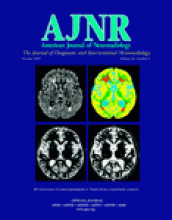We appreciated the answer of Moret and Vinuela (AJNR 2005;26:2163) to our letter regarding the questionable interpretation of results of the ACTIVE Study on Matrix coils (1, 2). In the second paragraph of their answer, the authors agree on a fatal early rebleeding rate of 7% instead of the reported 3% after treatment with Matrix coils of ruptured intracranial aneurysms. Surprisingly, in the following sections the authors persist in reporting fatal early rebleeding rates as low as 2%.
In the evaluation of fatalities after any invasive medical treatment, it is not unusual to find, in hindsight, explanations for these disastrous events. For example, the indication for the particular treatment may have been wrong or the material was not optimized at the time. Also, in some cases the operator may have made a wrong decision or an overt mistake during the procedure. However, these explanations do not alter the fact that these fatalities occurred, and the frequency of these events should be clearly reported on accordingly, especially in a prospectively designed study such as the ACTIVE Study.
Therefore, we think it is not valid to report a fatal early rebleeding rate lower than 7% because “Two patients in the ACTIVE Study presented with dissecting aneurysms and should not have been included because the treatment strategy was not adapted for such aneurysms. Thus, the rebleed rate should be 2%” (emphasis added), and because “At the time of the study, no other tools except Matrix coils were used to accomplish the treatment, which was a major limitation (this is not an excuse; it is a bias of the study and it was obviously a mistake).” This sharply contradicts the conclusion of their study as stated in the Matrix Newsletter: “the results of 1st treatment with 1st Generation Matrix Detachable Coils are favorable”.
Furthermore, Moret and Vinuela imply that our statement “Apparently the Matrix coils allow residual filling of the aneurymal sac over an unknown period of time and during this period the patient is not protected against a rebleeding” is based on a visual appreciation of the packing density after a Matrix coil treatment. This is a misunderstanding. We did not raise this issue at all, nor was it mentioned in the Matrix Newsletter. We have merely cited the authors themselves on “residual filling of the aneurysmal sac immediately after embolization with Matrix coils” and “progressive thrombosis at 12 months follow up angiography” in about half of the cases. We emphasize that we do not question their study results, only their interpretation.
We sincerely hope that their statement “How many suspicious, negative, or destructive comments were made during the first 6 or 7 years of coiling aneurysms” does not refer to our criticism. We are deeply concerned about the devastating consequences of early rebleeding after coiling of ruptured intracranial aneurysms and have reported on this issue recently (3). In this study, we judged a fatal early rebleeding rate of 1.4% (95% CI: 0.57–3.09%) in a consecutive series of 431 patients after treatment with bare platinum coils already to be a major concern. In view of these findings, a 7% fatal early rebleeding rate after treatment with Matrix coils as found in the ACTIVE study is unacceptably high.
In conclusion, we think that the interpretation and conclusions of the ACTIVE Study remain questionable in the Matrix Newsletter. At the least, concern on the very high fatal early rebleeding rate should have been expressed, if not a serious warning. Because Matrix coils are widely used, we think it is mandatory to publish the results of the ACTIVE Study in a peer-reviewed journal.
References
- Copyright © American Society of Neuroradiology












